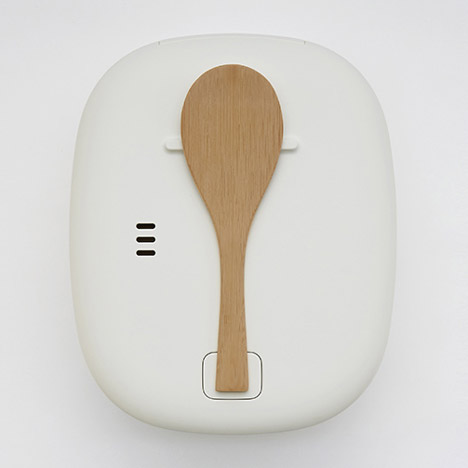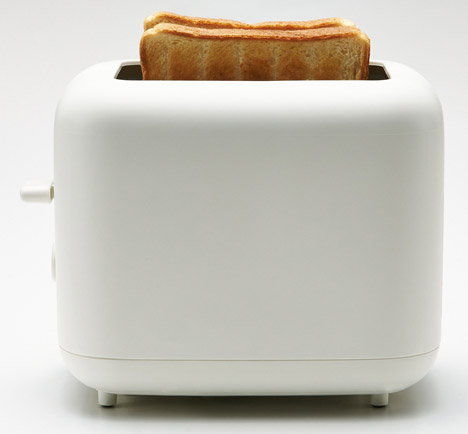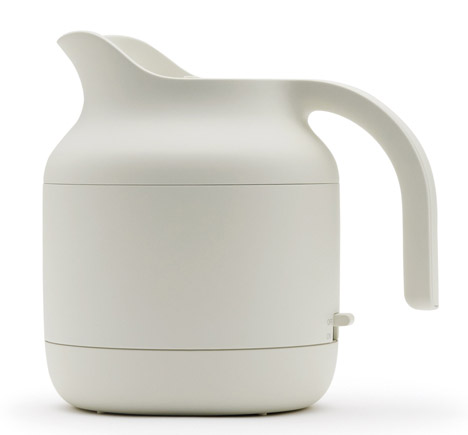November 30, 2015
Tapio Wirkkala's 100th Anniversary
Take a piece of ice in your hand and find our culture in it; find it in a stone smoothed by the rapids, or in sand that waves have shaped...
- Tapio Wirkkala, 1953
Tomorrow begins the last month of Tapio Wirkkala's (1915-1985) 100th anniversary year, one of the leading figures of Finnish design.
Tapio Wirkkala was born in 1915 in Hanko, South Finland, where he spent his childhood and youth with his parents and two younger siblings. In the 1920s the family moved to Helsinki. Wirkkala's artistic talents were noticed from early on, and at the older age he studied ornamental sculpture at the Central School of Arts and Crafts from 1933 to 1936.
In the beginning of the 1950s Wirkkala's career skyrocketed after that he designed the Finnish departments of the Milan Triennials in 1951 and 1954. From both occasions he received the Grand Prix for the exhibition design and his work in glass and wood. In 1951 he also won the Lunning prize and his work Lehti (Leaf) was chosen as 'the most beautiful object of the year' by the American magazine House Beautiful. From 1951 to 1954 he worked as artistic director of the Institute of Industrial Art in Helsinki, and in 1954 Wirkkala was appointed as artistic director of the Karhula-Iittala (later Iittala) glassworks.
Wirkkala's work is recognisable from the natural shapes and forms. It is not surprising to hear that nature was Wirkkala's main source of inspiration. He was further an exceptional versatile artist: his designs range from glass design to the design of banknotes which remained in circulation from 1947 until the 1980s. Therefore Wirkkala's work has reached every corner of the Finnish society. Back at my childhood home Wirkkala has been present with his Ultima Thule series, which my mother still daily uses.
Since January the 1st of this year Wirkkala's designs have been widely celebrated in Finland. Internatioanlly the celebrations have been the most visible through Iittala, for which Wirkkala designed about 400 glass objects during his career. For this year only Iittala brought back Wirkkala's mouth-blown bottles and expanded the Ultima Thule series with new and old products.
Sources: 1, 2, 3, 4 Images: 1, 2, 3
November 24, 2015
Encore! The New Artisans
A while ago when the book of Kinfolk was published, I wrote a post about slow living. Today my eyes were caught by the bright yellow cover of the book Encore! The New Artisans: Handmade Designs for Contemporary Living by Olivier Dupon (in Dutch Handwerk: Nieuwe trends slow living, hence my attention). The book is filled with crafted works of artists, designers and makers from around the world. This book is therefore the ultimate resource for discovering new talents and techniques, so be warned: it might cause some serious craving for handcrafting.
Sources: 1, 2.
November 16, 2015
Objects for Books
Phew, time sure flies! To let you know I am still here, I want quickly share this beautiful picture found from Ems Designblogg.
Objects for Books designed by Swedish industrial designer Jessica Signell Knutsson, interpreted by Liffner-Lingsell.
Objects for Books designed by Swedish industrial designer Jessica Signell Knutsson, interpreted by Liffner-Lingsell.
October 28, 2015
Terho ceiling lamp
Not so long time ago I noticed hundreds and hundreds acorns lying on the ground in the forest. I had to stop and admire their beauty - their shape is so simple, so elegant.
The Finnish designer Maija Puoskari must have noticed the same. As result, Terho (meaning in Finnish an acorn) ceiling lamp was born. The lamp comes in three sizes, made from opal white mouth blown glass and Finnish alder.
Terho ceiling lamp series by Maija Puoskari/Mater
The Finnish designer Maija Puoskari must have noticed the same. As result, Terho (meaning in Finnish an acorn) ceiling lamp was born. The lamp comes in three sizes, made from opal white mouth blown glass and Finnish alder.
Terho ceiling lamp series by Maija Puoskari/Mater
October 23, 2015
DDW 2015: few picks from the Klokgebouw
Ever since I first visited the Netherlands, I have been a huge fan of the Dutch Design Week (aka DDW). For almost twenty years long the DDW has annually taken over the city Eindhoven in each October. Numerous events, lectures, debates, workshops and exhibitions are arranged in more than eighty locations. It is then not surprising to hear that DDW is the biggest design event in Northern Europe in which more than 2400 designers from home and abroad are present.
My eyes were first caught by Bottle-up project in which six young Dutch designers travelled to Zanzibar to up-cycle the glass waste that had taken over the island. The resulting products are beautifully made, and look very chic indeed. I could imagine having them at home!
Another interesting work is the Cornwall project by Kirstie van Noort. During her roadtrip in Cornwall in England she researched the local porcelain and mining industry. As result, 40 different raw materials were found with which she created a colour palette of 250 colours. I especially loved the minimal design of the ceramics, and the story behind their colours makes them very special.
The larger Mind the Step exhibition offered a view of ideas that are currently going on in the design world. Also a few theme's could be spotted.
3D printing has been a hot topic for a couple of years now, and this year a few design with this technique were again presented. This time we saw examples of not only 3D printed plastic, but also clay and concrete (!).
Many designers had a very playful approach in their work. What do you think about the face jewelry by Ditte Trudslev Jensen for example? The German designer Silvia Knüppel had also playfully combined two iconic stools, the Alvar Aalto stool 60 and Max Bill Ulm Stool, into one object. Further her Indoor trash-bag of leather offers a humorous alternative for a bean bag chair.
The teapackages designed by Salvage Press in collaboration with Distillers Press and Solaris tea really brought a smile to my face (and some ideas how to ask someone for a cup of tea next time - fancy a quick cuppa tea?).
The designers at the moment have a huge variety of materials to experiment with. Sam Linders reuses beautiful wet blue leather shavings in her designs. A study which reminded my childhood in Finland, was Cynthia Oegema's Betula project in which only materials from the Birch tree are used.
In addition to 'dead' materials, some living materials were present as well. The shoe designer Kristel Peters explores the possibilities for sustainable ways of shoe-making and new materials with low/no impact on the environment. Her Growing shoes are built up by living organisms of mycelium. Mycelium has recently been used for many interesting biodesign projects, but I will write more about this topic later.
So here are some of my picks from the Klokgebouw! Do you have any favourites?
Photos by me.
October 19, 2015
Pipe
Candles and fall go hand in hand. If you look for something different on your table, you should consider the candle holder by Finnish creative studio and design house Samuji.
PS. Am I the only one who gets reminded of this painting? Ceci n'est pas une pipe...
Photo by Samuji.
October 18, 2015
The Kinfolk Home and the cornerstones of living slowly
On Tuesday, October 20th the leading lifestyle magazine, Kinfolk, publishes the book The Kinfolk Home.
The book offers a peek into 35 homes of designers, entrepreneurs, architects, photographers and stylists around the world which represent slow living. With 'slow living' Kinfolk means interiors which 'cultivate community, simplify our lives and reclaime time for what matters most.'
The word 'slow' has popped up for quite some time in different connotations: slow living, slow design, slow food, slow reading, slow journalism, slow filmmaking and the list goes on. They all belong to the so-called Slow Movement, which began when the Italian political activist Carlo Petrini protested against fast food and the opening of a McDonald's restaurant in Rome in 1986. The Slow Food Movement was born, which slowly (ha ha) spread itself to other areas of life, with the common goal of going against our current fast-pased society.
The slow living aims for slowing down and chooses for living our lives in a more simple way. Another important aspect of slow living is the increasing importance of 'togetherness': after getting sucked into the social media which asks for our attention 24/7, the people search to connect with their family, friends and community again.
All these elements are recognisable in the photographs of Kinfolk's book. The depicted people look relaxed, the interiors have a 'stopped' feeling. This book will indeed offer an escape from the hectic world, but I still wonder if it is nowadays possible to live slowly to the fullest. What are your thoughts about it?
Sources: 1, 2, 3, 4.
All pictures from Kinfolk.
October 08, 2015
Acorn
How cute are these? The wooden acorns are designed by the German Alexander Ortlieb, and come in two sizes: 12.5 cm and 15.5 cm in length. Every acorn is naturally made from oak!
Ortlieb has also other beautiful designs in wood, such as this bowl for salt, spice mills and even eggshells (!).
Click here to visit the website of Alexander Ortlieb.
October 07, 2015
Minimalist kitchen appliances from Muji
Tokyo-based designer Naoto Fukasawa designed a serie of minimal kitchen appliances for the Japanese lifestyle brand Muji. The serie consist of toaster, electric kettle and a rice cooker, all designed with smart little details which makes them extremely functional. I am very excited about this collection since I have been looking for a perfect toaster for ages (but honestly, I just want to have them all)!
The appliances have recently launched at selected stores in the USA, and they will be available in the UK from November. Other European countries will have to wait till next year (sadly).
Source: dezeen.
October 04, 2015
Nice to meet you.
Art history student with a passion for architecture and design. Hopeless aesthete. Born in Finland, now living in the Netherlands. With these three simple sentences I would like to introduce myself.
So why kotona? In Finnish, kotona means 'at home'. For me, personally, this means I am at home in two different places: in Finland where I was born and raised, and in the Netherlands, the country in which I settled five years ago for my love. But furthermore, I am interested in the relationship between human beings and the built environment. What does the interior of our homes tell about us? How do the companies promote 'the home'? And lastly, which factors make a building a 'home'?
On this blog I will write about architecture, interiors and design, from both contemporary and historical perspective. The topics will mainly arise from the Nordic countries, but may occasionally wander to Europe and even as far as to Japan. From time to time I will also share my love for simple and beautiful things in life.
Welcome. x
So why kotona? In Finnish, kotona means 'at home'. For me, personally, this means I am at home in two different places: in Finland where I was born and raised, and in the Netherlands, the country in which I settled five years ago for my love. But furthermore, I am interested in the relationship between human beings and the built environment. What does the interior of our homes tell about us? How do the companies promote 'the home'? And lastly, which factors make a building a 'home'?
On this blog I will write about architecture, interiors and design, from both contemporary and historical perspective. The topics will mainly arise from the Nordic countries, but may occasionally wander to Europe and even as far as to Japan. From time to time I will also share my love for simple and beautiful things in life.
Welcome. x
Subscribe to:
Posts (Atom)































